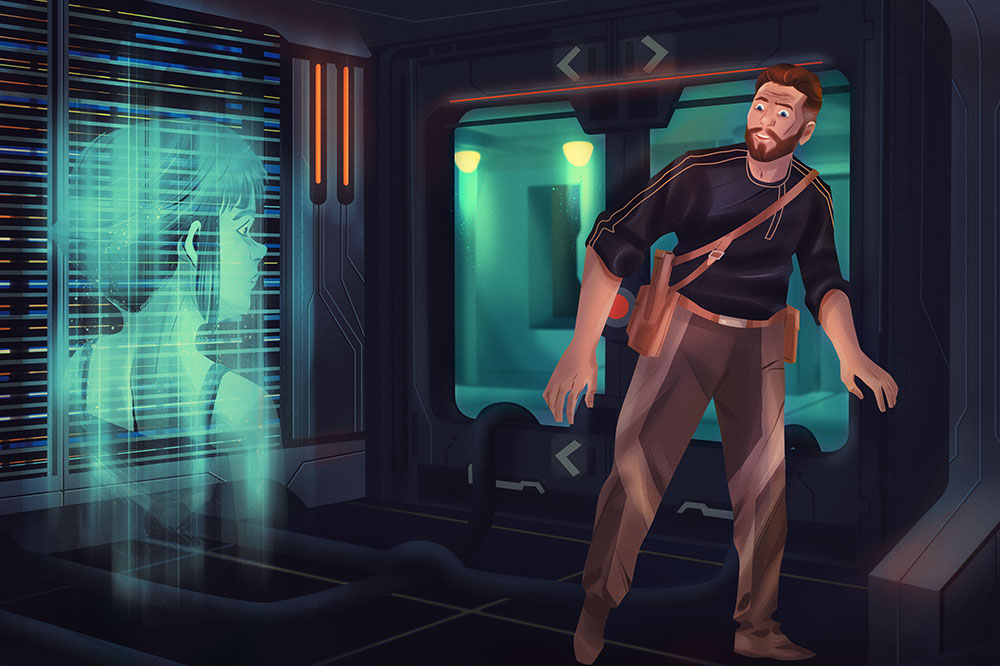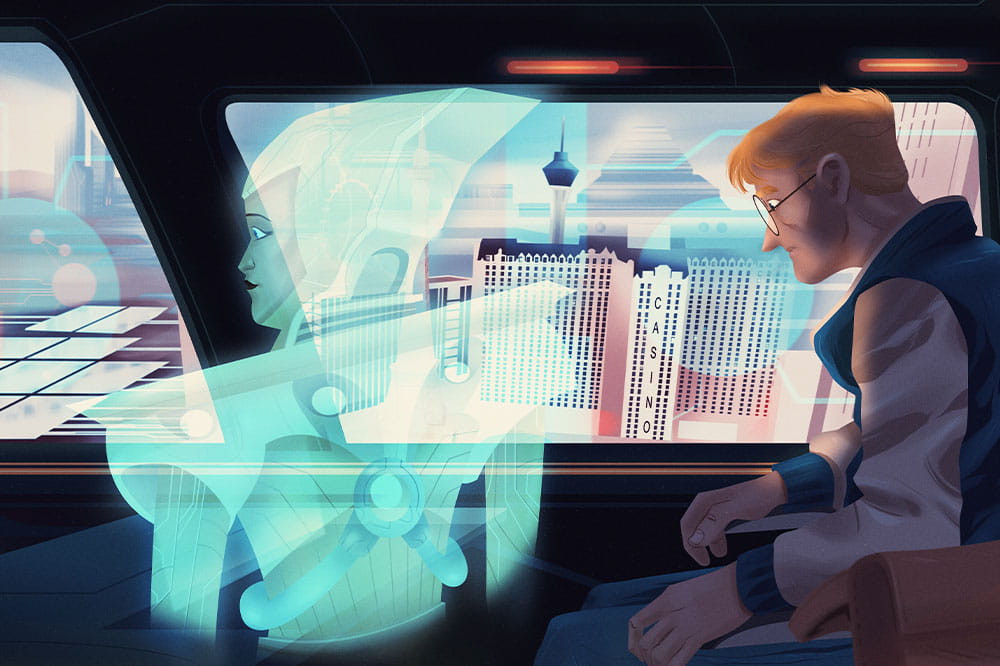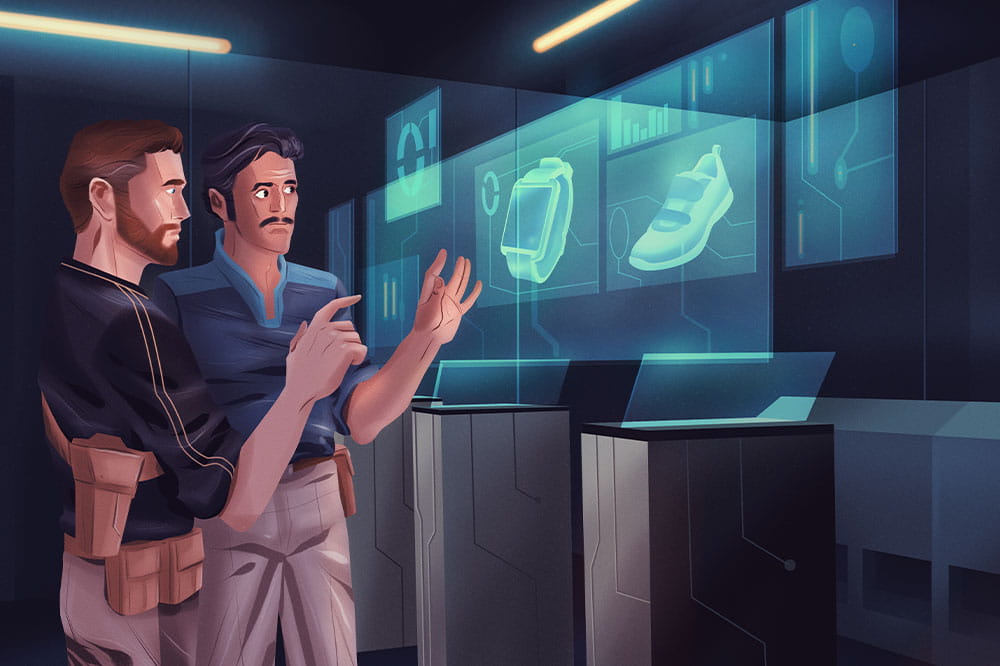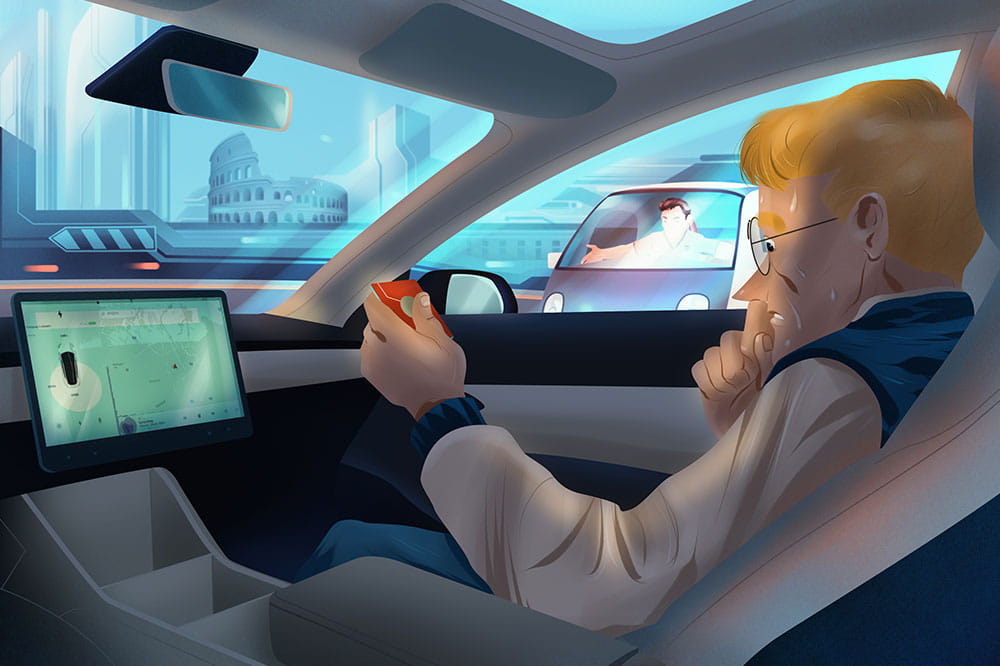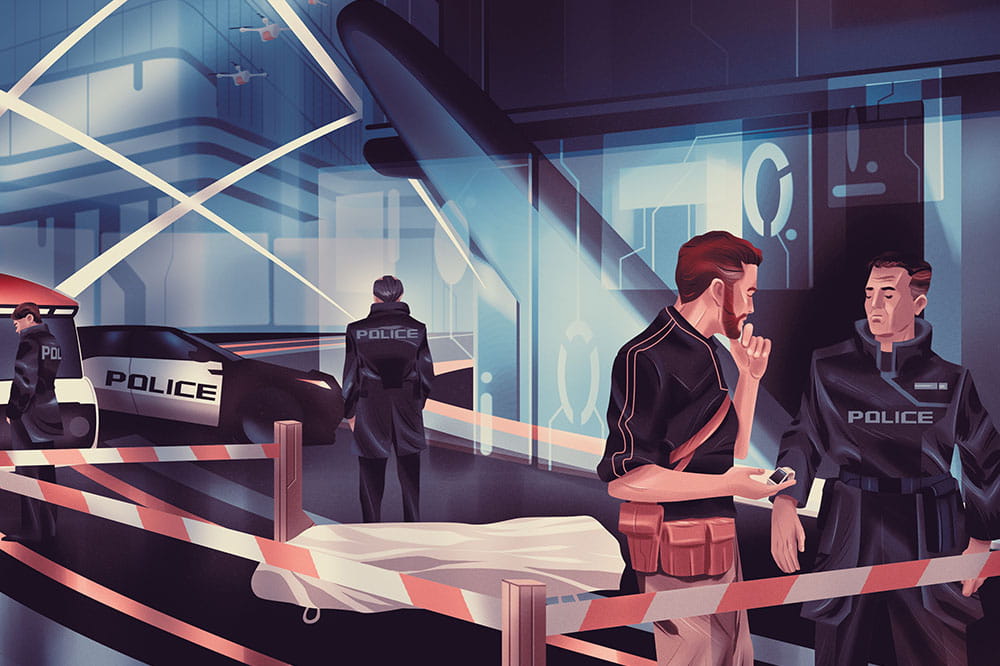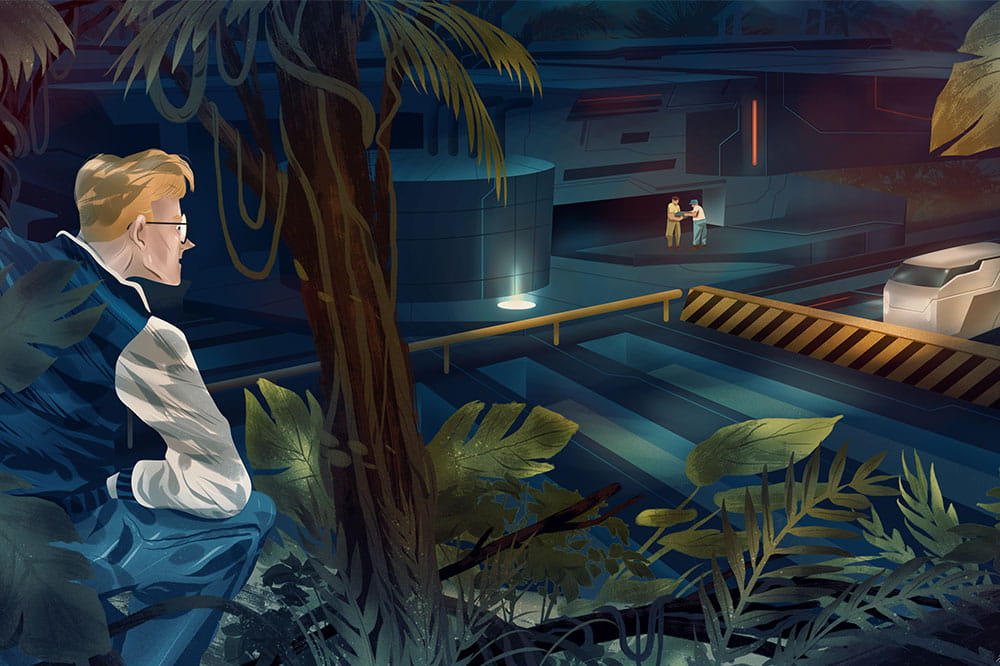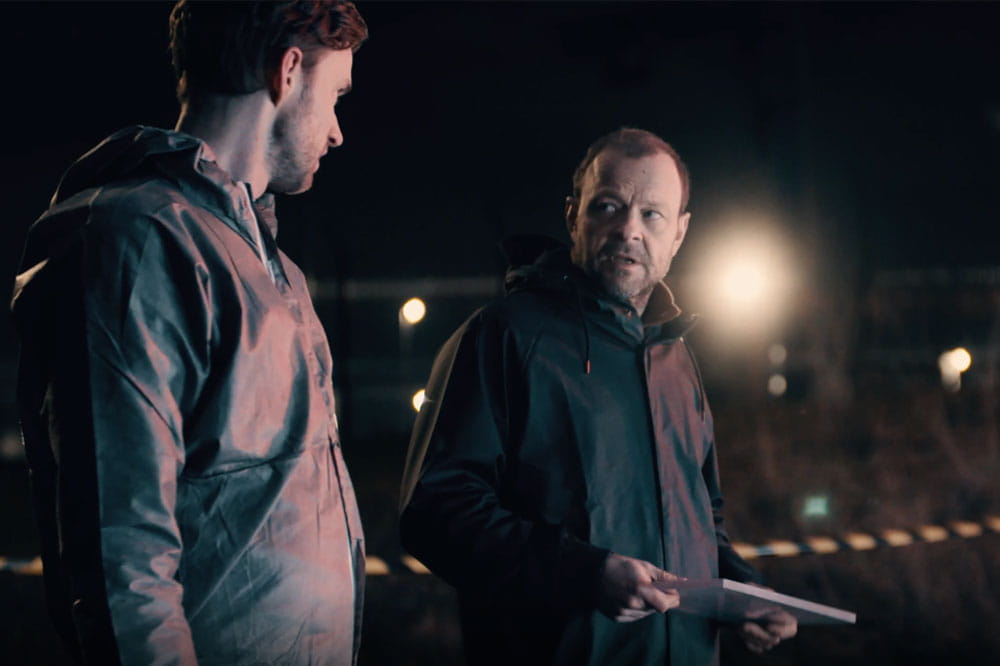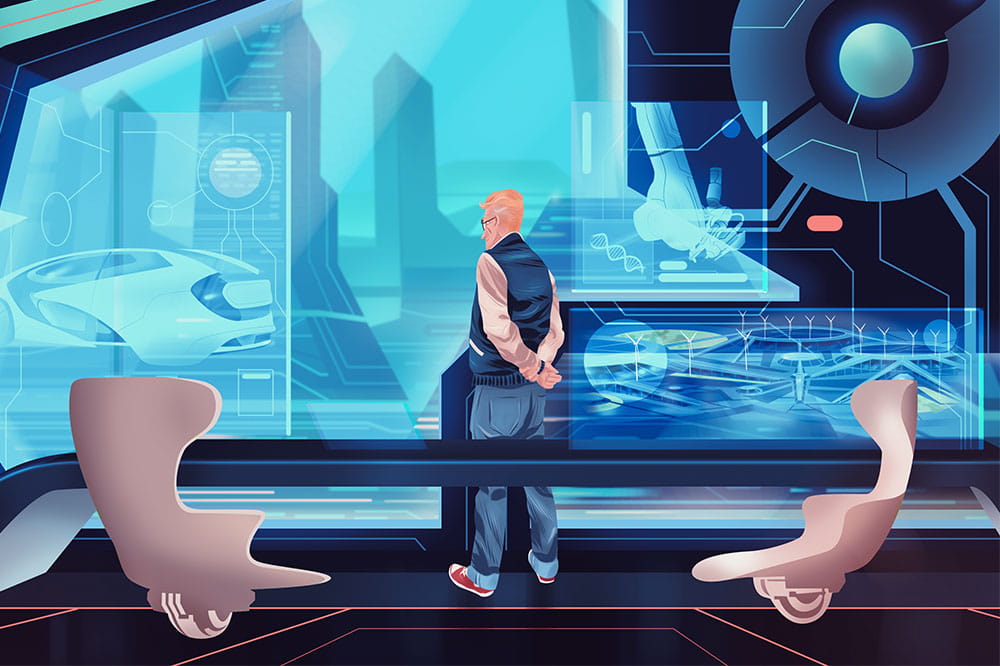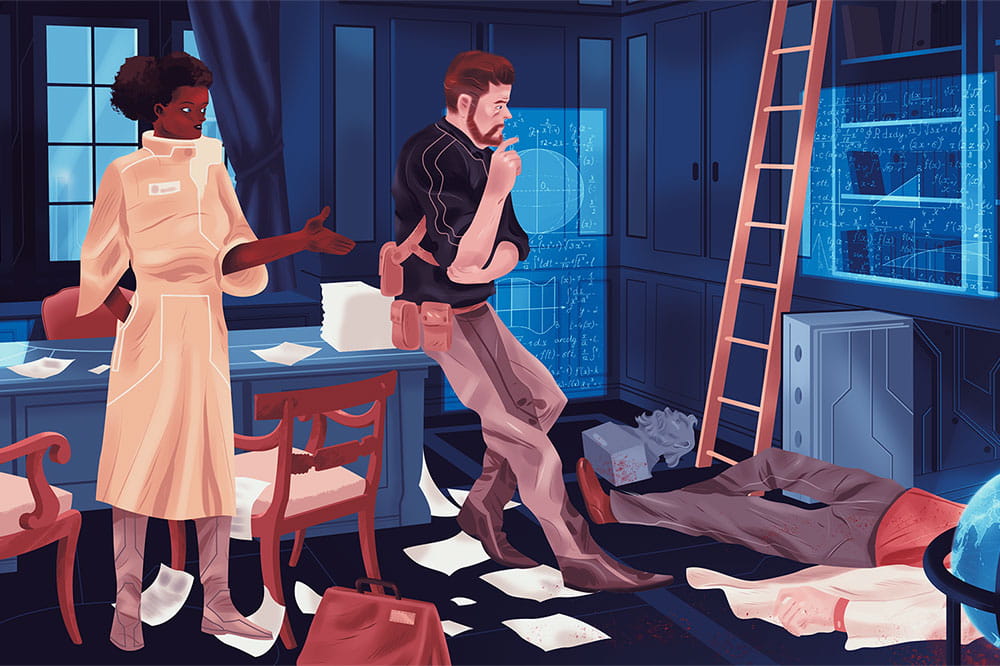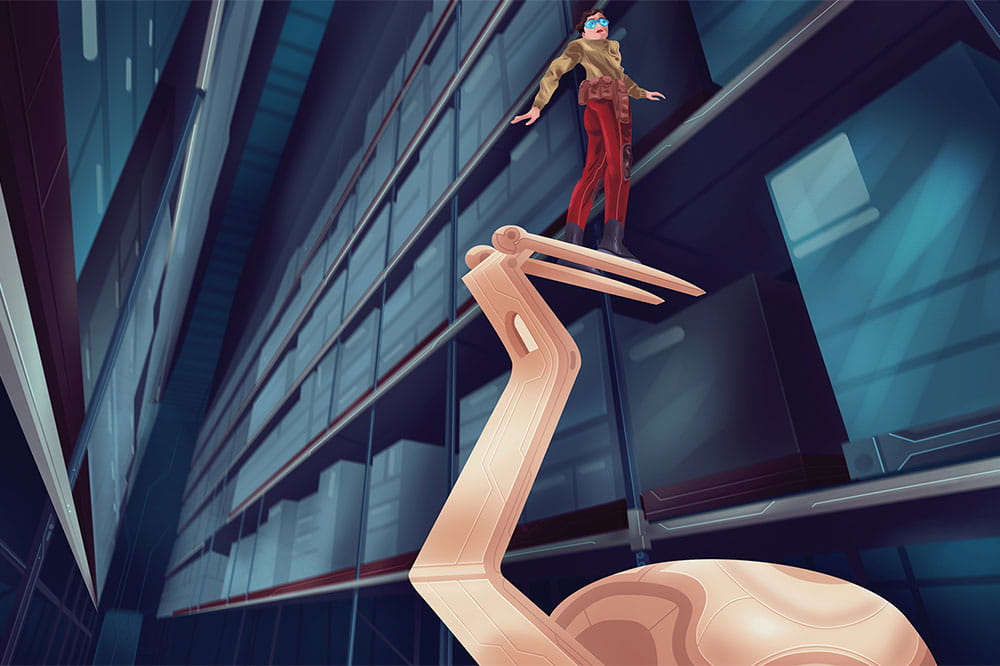Obtain news and background information about sealing technology, get in touch with innovative products – subscribe to the free e-mail newsletter.
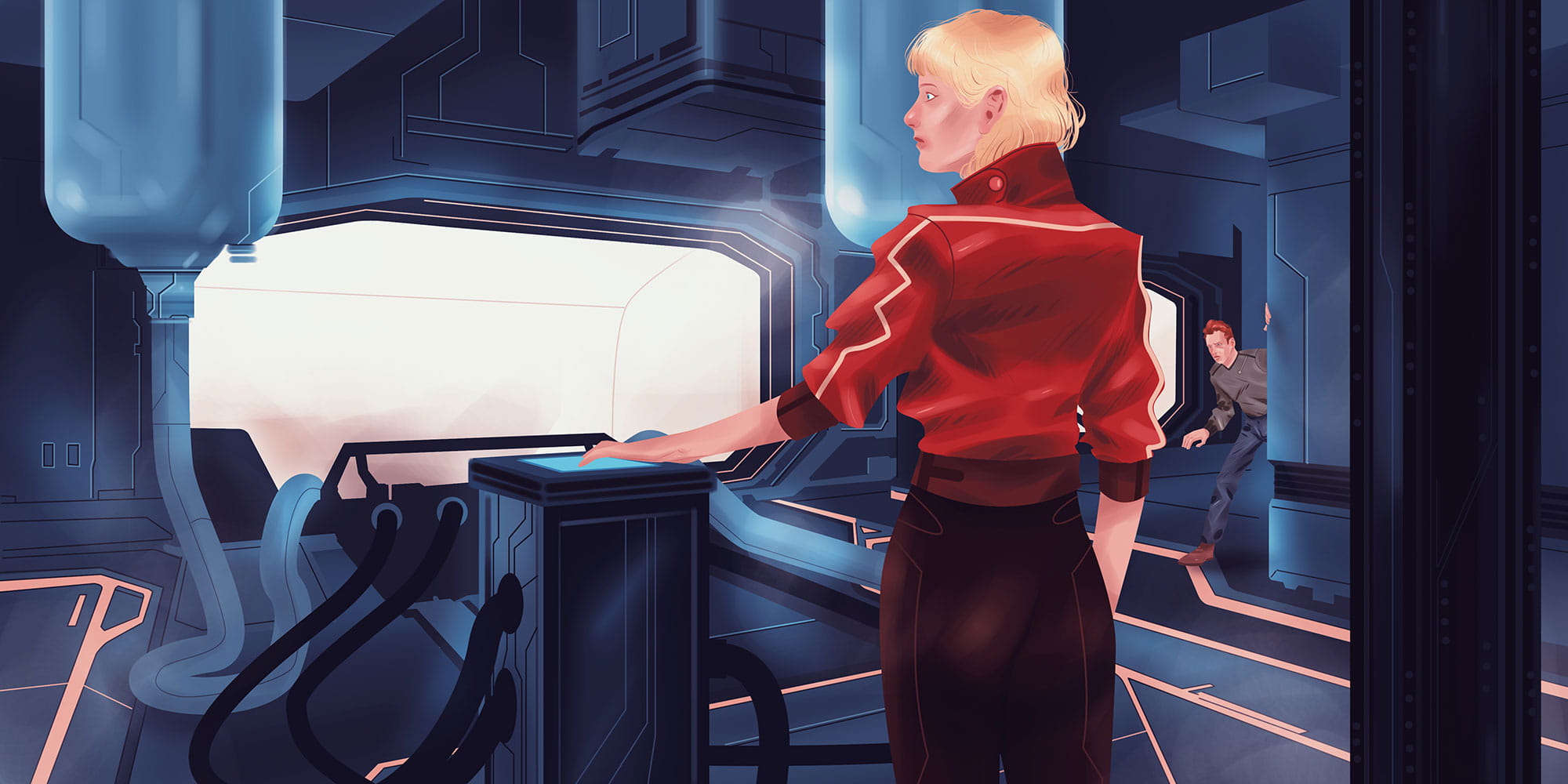
14.12.2017 | Story
Traveling Into the Future
Each month, you can find a new chapter in the ESSENTIAL science-fiction series “Trip into the Future.” In a fictional world where the goals of the Paris climate accord have become a reality, Nero, a blogger, explores the potential technological and social transformation resulting from it. The goal of the series is to play with fully different visions as creatively as possible and to take the reader along on a thought experiment: What might our future look like – and why is it important to us?
Short Science Fiction Stories: Part 6
The Bloody Printer
When a journalist and blogger crisscrosses the world, jet lag is inevitable. I would just like an explanation as to why no reasonable remedy has ever been found to deal with this. We can travel around the world in the hyperloop, but we’re always tired the next day or lie around awake at night. Still, the true crime thrillers that my AI assistant Avar reads to me are surprisingly helpful: Okay, I admit it: You sit bolt-upright and wide-awake in bed the first time you listen to one. But I’m glad to have the stories read to me multiple times. And Avar’s murmuring voice is the final touch. Here is my current favorite…
“Analysis,” said Cliona Aboud and then tapped lightly at the spot behind her ear where a microchip had been inserted. “Analyzing: motor housing,” answers the solicitous voice of the 3D printer – which has always been just a tad too cheerful in Cliona’s view. “Slight deviation in the material composition.” Cliona suppressed an expletive. It was the third time this month. How was that possible? “Specify deviations,” she ordered the printer via the interface implanted in her head. The printer would have also understood the simple request “Which ones?” But Cliona refused to talk with a printer as though it were her best friend. There were already enough of her colleagues who had fallen in love with work devices that could talk and think for themselves. Just this morning, an interview was fed into Cliona’s brain feed in which a psychologist warned about rampant objectophilia. “Gladly,” the printer answered, and Cliona rolled her eyes. “Deviations: hydrogen content 0.06 percentage points too high, oxygen content 0.02 percentage points too high. Micro deviations for carbon and nitrogen. Other micro deviations for…”
“Yeah, yeah. That’s enough!” Cliona said and stared into space. Almost precisely the same deviations as last week. The plastic-perfluoroelastomer mixture was an absolute high-performance material and deviations could not be tolerated. It was a mixture that was not even considered possible just a few years earlier. Chemists designed it on a holoboard and assembled it at the molecular level. She would have to discard the entire batch. Once again. The cost of machine operation over an entire day wasted. Furthermore, she would have to inform customers they would have to print the ordered parts themselves if they needed them urgently. This was a possibility for most of them. But their 3D printers were naturally fully occupied with other work.Oh yes, she should probably check the deliveries of raw materials. She tapped on the microchip again. “Locate Alice Wormuth.” The main computer reported back immediately: “Alice Wormuth is not on the grounds today. There is no absence notification in the system.”
Cliona blinked. What was that all about? The chief analyst for raw material purchasing had not shown up for her shift today? This wasn’t helpful. She would have to swing by the printer personally. Oxygen molecules in the mixture – that could only mean that air was entering into the system somewhere in the process. The question was where. Perhaps it wasn’t even the material container. Maybe it was a leaking hose. Or contamination during the printing process? But the continual chattering of assistance systems would have had to signal the alarm some time ago — they report on every little thing in each other case. “Launch new production sequence,” she ordered, and then asked the factory system: “Shortest route from here to the raw material room?” “Good Morning, Ms. Aboud,” the system responded. “Spare me please. Just the information,” Cliona interrupted. “Three thousand steps from your current location,” the voice said, and Cliona thought that it sounded a bit huffy, as if it took some pleasure in informing her about the long distance. Of course, that was nonsense. Machines had no feelings. Even in the 21st century. “In view of the 300-gram increase in your weight recorded when you entered the factory this morning, I suggest you walk the full distance, or…” the voice murmured. “Oh, shut up! Vehicle. Immediately,” Cliona commanded.
Five minutes later, an autonomous vehicle pulled up silently. She climbed in. As she rode through the halls, Cliona’s thoughts turned to Alice Wormuth again. Did the chief analyst deliberately stay away from work? In the industry, rumors were circulating that suppliers will soon be forced out the market because manufacturers will just print their vehicles in a single work step completely by themselves. Even printer manufacturers allegedly believed they could enter the auto business. Cliona was not inclined to believe that. These companies really lacked detailed knowledge. This business ultimately involves complex engineering know-how – not some 0815-printer like the one that prints pizzas for lunch in the cafeteria. Technical expertise was in high demand to keep an entire sector from quickly dying out. Nonetheless, the employees were not in a good mood. The situation was all the more annoying with those confounded robots, factory avatars and talking machines spreading their happy mood all the time. In the last few months alone, two workers in the factory had stopped coming to work. They had taken off. At the entrance to the printer hall, she passed a worker and gave him a quick wave.
A soft clatter, humming and stamping filled the hall, where large and small machines with hoses, nozzles and pumps mixed, processed and reassembled the materials at the molecular level. Cliona looked for the machines responsible for the production of the motor housing for her department. One of them was a huge device with a maw as big as a gate. It devoured entire container-loads of materials and recomposed them. She tapped the microchip behind her ear and called up a display of the analyses. Perhaps one would have to just crawl under the thing. But she would need help for that. The employee she had passed … Cliona furrowed her brow. The worker whom she had just seen – wasn’t that Ben? Hadn’t Alice mentioned last week that she wanted to dismiss Ben without notice because he had harassed female employees and then manipulated log data that could have verified the incidents? Why was he still here? Who were those female employees again? Wasn’t one of them Siya, who subsequently left her job and disappeared without a trace?
Out of the corner of her eye, Cliona saw a shadow flitting toward her. She turned around. No one was there. The machines stamped, milled and ground loudly. There was buzzing, humming and crunching. In all this noise, an army could have crept up behind her. Hydrogen, oxygen, carbon, nitrogen… Just what did the contaminants remind her of? Especially in this combination. Her index finger was as cold as ice as she tapped again and, in a soft whisper, asked: “The chemical composition of a human body?” “The answer that you wanted took 0.09 nanoseconds,” the voice murmured. “Oxygen 56.1 percent, carbon 28 percent, hydrogen 9.9 percent, nitrogen 2.0 percent, calcium 1.5 percent…” Cliona saw someone lunge at her, instinctively crouched down, and held both arms in front of her as she screamed. Ben stumbled past her, visibly surprised. And suddenly everything made sense. The three employees who had disappeared. The contaminated batches. Ben ran towards her a second time and tried to grab her. But she turned sideways, causing her attacker to miss his mark, and then gave him a powerful shove with her shoulder. “And this is exactly why you need a bit more body weight, you stupid system scanners,” she thought as she watched Ben lose his balance, crash through the rail, and fall screaming down the raw material shaft. And then: the hatch closing over him with a crunch.Cliona looked on silently as the machines processed the plastic mixture. “Attention! Slight deviations in the material composition,” the computerized voice said Cliona sighed. She would have to discard another batch of high-performance plastic.
More Stories About Future Files

Join Us!
Experience Freudenberg Sealing Technologies, its products and service offerings in text and videos, network with colleagues and stakeholders, and make valuable business contacts.
Connect on LinkedIn! open_in_new